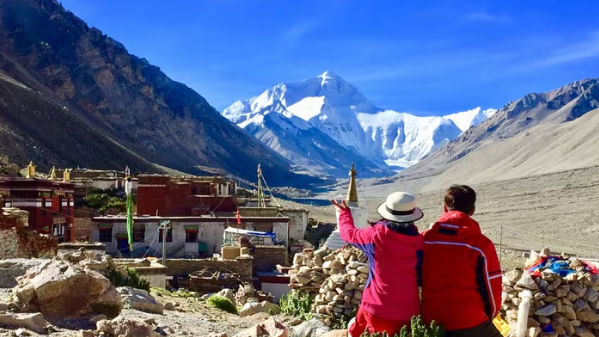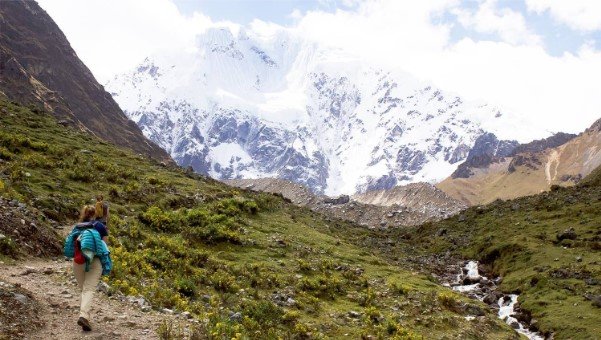When most trekkers dream of the Himalayas, their minds immediately wander to the Everest Base Camp or the Annapurna Circuit. Yet nestled in the shadow of the world’s eighth-highest mountain lies a trekking route that offers something increasingly rare in Nepal’s popular trails: authentic remoteness paired with breathtaking beauty. The Manaslu Circuit has emerged as one of the most rewarding treks in the Himalayas, attracting adventurers who seek more than just mountain views—they’re searching for a genuine connection with the landscape and its people.
Understanding the Manaslu Circuit
The Manaslu Circuit winds around Mount Manaslu, standing at an impressive 8,163 meters. This trek takes you through the Manaslu Conservation Area, a protected region that showcases Nepal’s incredible biodiversity and cultural heritage. The circuit typically takes between 14 to 18 days to complete, depending on your pace and acclimatization needs, covering approximately 177 kilometers of varied terrain.
What makes this trek particularly special is its restricted status. Unlike some of Nepal’s more commercialized routes, the Manaslu Circuit requires a special permit and must be undertaken with a registered guide. While this might seem like an inconvenience, it’s actually a blessing in disguise. These regulations have helped preserve the trail’s pristine character and ensured that local communities benefit directly from tourism.
The Physical Challenge and Rewards
Let’s be honest about what you’re signing up for. The Manaslu Circuit isn’t a casual walk in the mountains. The trek crosses the Larkya La Pass at 5,160 meters, demanding good physical fitness and proper acclimatization. You’ll experience everything from subtropical forests to alpine terrain, with daily elevation gains that will test your endurance.
However, the physical demands pale in comparison to the rewards. Each day brings new landscapes that seem almost impossibly beautiful. You’ll walk through terraced fields that cascade down hillsides like green staircases, pass through rhododendron forests that explode with color in spring, and eventually find yourself in high-altitude terrain where the air is thin but the views are infinite.
The sense of accomplishment when you finally stand atop Larkya La Pass, prayer flags snapping in the wind and panoramic mountain views stretching in every direction, is indescribable. It’s a moment that stays with trekkers long after they’ve returned home.
Cultural Immersion Along the Trail
What truly distinguishes the Manaslu Circuit from other Himalayan treks is the profound cultural experience it offers. The trail follows an ancient salt trading route between Nepal and Tibet, and this heritage is still palpable in the villages you’ll encounter.
The lower regions are predominantly Hindu, with traditional Gurung villages where life continues much as it has for centuries. As you gain altitude, the culture shifts noticeably toward Tibetan Buddhism. Villages like Samagaun and Samdo feel like you’ve crossed an invisible border into Tibet itself. Here, you’ll see elaborate monasteries, spinning prayer wheels, and mani walls stretching along the trail, their stones carved with Buddhist mantras.
The people you meet along the way aren’t just running teahouses for trekkers—this is their home. They’re farmers, herders, and traders who have adapted to life in these challenging conditions. Many trekkers speak of the warmth and hospitality they receive in these remote villages as one of the trek’s highlights. Sharing dal bhat with a local family, watching yaks being herded across high pastures, or witnessing a Buddhist ceremony in a centuries-old monastery adds layers of meaning to the physical journey.
Best Time to Trek the Circuit
Timing your trek correctly can make the difference between a magical experience and a challenging ordeal. The Manaslu Circuit has two primary trekking seasons, each with its own character.
Spring, from March to May, offers warming temperatures and the spectacular sight of rhododendrons in full bloom. The lower elevations burst with red, pink, and white flowers, creating a natural garden that seems almost surreal. The weather is generally stable, though occasional afternoon clouds can obscure mountain views.
Autumn, from September to November, is considered the premium season. The monsoon rains have cleared the air, resulting in crystal-clear mountain views. Temperatures are comfortable for trekking, though mornings and evenings at higher elevations can be quite cold. The trade-off for these ideal conditions is more trekkers on the trail, though it’s still nowhere near as crowded as the Annapurna or Everest regions.
Winter trekking is possible but requires serious preparation for extreme cold and potential snow on the pass. Summer monsoon season brings heavy rain, leeches in the lower elevations, and increased risk of landslides, making it the least recommended time.
Practical Considerations for Your Journey
Preparing for the Manaslu Circuit requires more planning than some of Nepal’s more established routes. You’ll need three permits: the Manaslu Restricted Area Permit, the Manaslu Conservation Area Permit, and the Annapurna Conservation Area Permit (since the trail exits through Annapurna region). These can only be obtained through a registered trekking agency.
Accommodation along the route consists mainly of teahouses, which range from basic to surprisingly comfortable. Don’t expect luxury, but you’ll find clean beds, hot meals, and often Wi-Fi in the lower villages. As you gain altitude, facilities become more basic, but the hospitality remains constant.
Physical preparation shouldn’t be underestimated. Start training at least two to three months before your trek with cardio exercises, hiking with a weighted backpack, and altitude training if possible. Many trekkers who struggle on the trail are perfectly fit at sea level but haven’t prepared for the unique demands of high-altitude trekking.
The Environmental Responsibility
Trekking the Manaslu Circuit comes with an implicit responsibility to preserve what makes it special. The region faces the same environmental pressures as other popular trekking areas: waste accumulation, deforestation, and the impacts of climate change.
Responsible trekkers carry out all non-biodegradable waste, use refillable water bottles with purification systems instead of buying plastic bottles, and stay on designated trails to prevent erosion. Many teahouses now offer solar-heated showers and are working to reduce their environmental footprint. Supporting these initiatives through your choices makes a tangible difference.
Climate change is already affecting the region, with glaciers retreating and weather patterns becoming less predictable. By trekking responsibly and supporting sustainable tourism practices, you contribute to the long-term preservation of this remarkable area.
Conclusion
The Manaslu Circuit represents what trekking in the Himalayas once was before the major routes became highways of adventure tourism. It demands respect—for the altitude, the terrain, the culture, and the environment. In return, it offers something increasingly precious: an authentic mountain experience where the journey matters as much as the destination.
This trek isn’t about ticking off another bucket list item or collecting Instagram-worthy photos, though you’ll certainly return home with incredible images. It’s about walking in the footsteps of ancient traders, sharing tea with mountain communities, and discovering what you’re capable of when pushed beyond your comfort zone. The Manaslu Circuit challenges your body, enriches your cultural understanding, and reminds you why wild, remote places matter.
For those willing to put in the preparation and embrace the uncertainty that comes with venturing off the beaten path, the Manaslu Circuit offers an unforgettable Himalayan adventure that feels genuinely earned—a journey that changes you in ways both expected and surprising.





